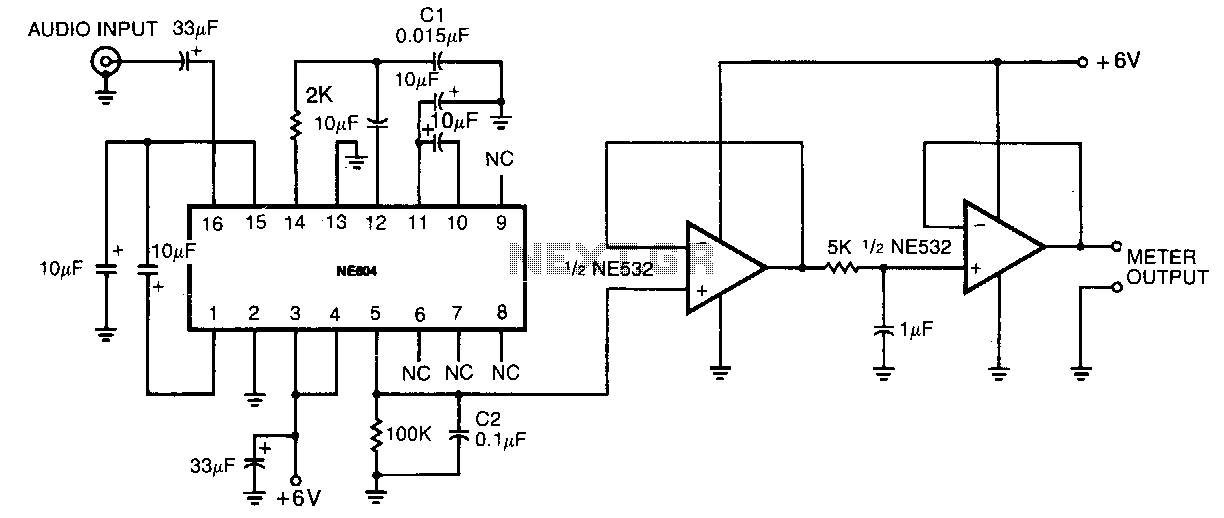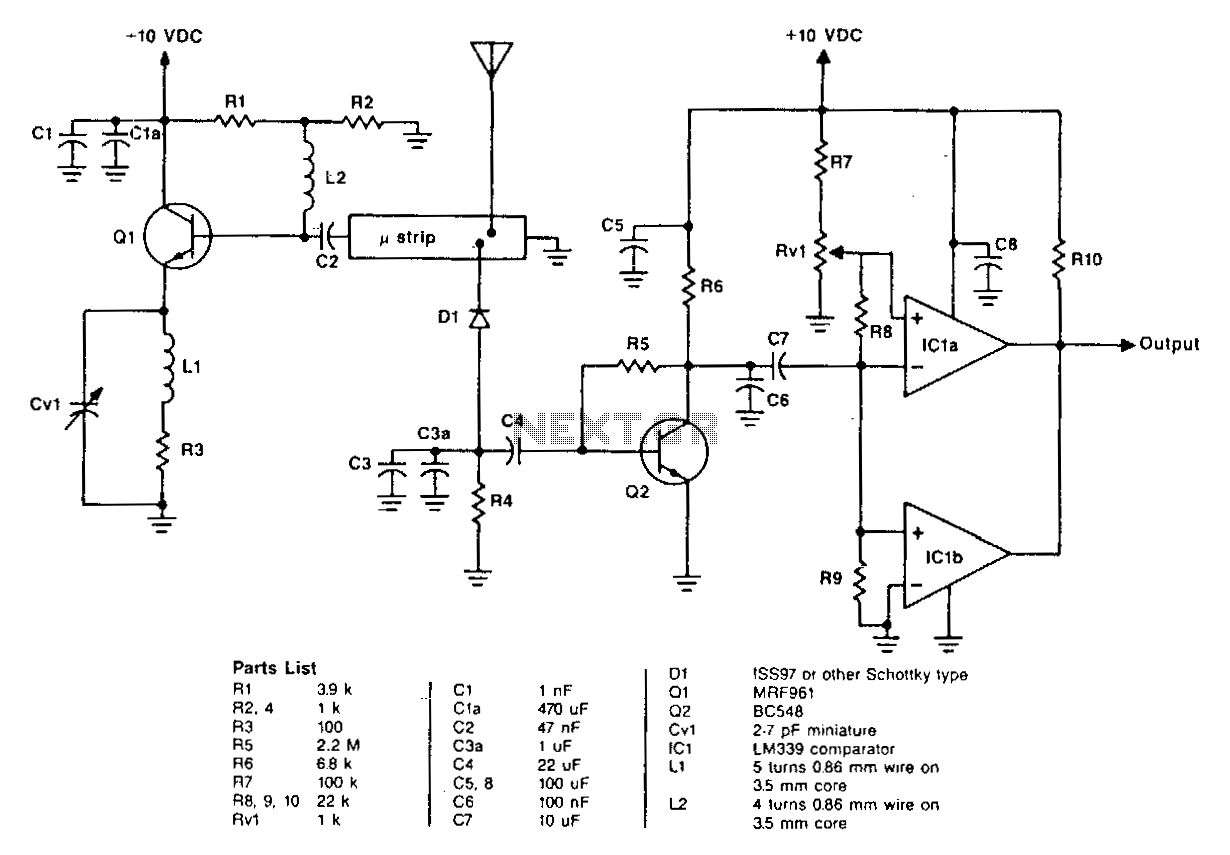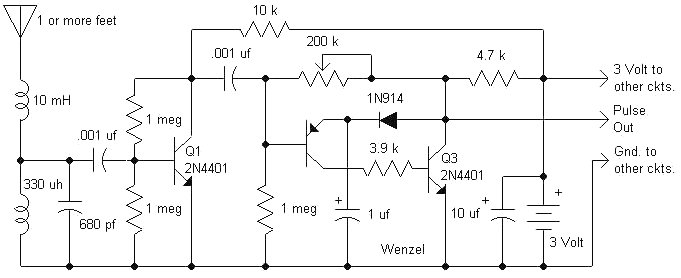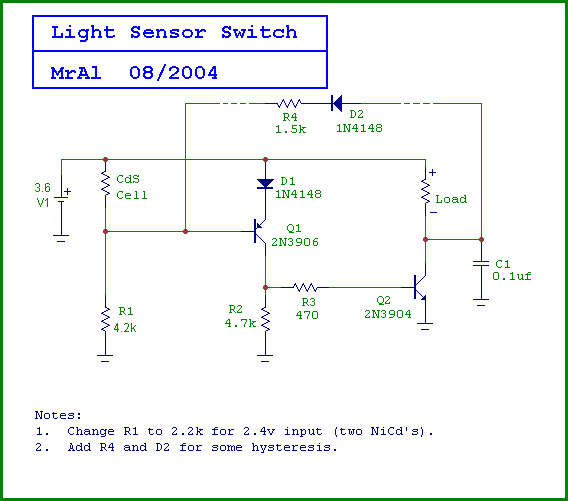
Micropower radioactive radiation detector
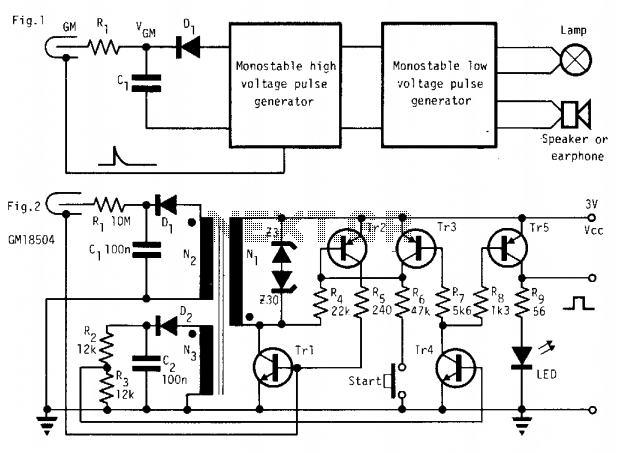
In the absence of radiation, no current is drawn. At normal background radiation levels, the power consumption is extremely low. The instrument may be left on for several months without changing batteries. In this way, the detector is always ready to indicate an increase in radiation. An LED is used as an indicator lamp. With background radiation, it draws less than 50 µA. A ferrite pot core is used for the transformer with N1 = 30, N2 = 550, and N3 = 7. Using two 1.5V batteries with 0.5 Ah total capacity, the detector can work at background radiation levels for 0.5 Ah + 50 µA = 10,000 hours, which is more than a year.
The described radiation detector operates efficiently under low power conditions, making it suitable for long-term monitoring without the need for frequent battery replacement. The device is designed to remain in a standby mode when no radiation is detected, consuming negligible power, which allows for extended operational periods.
The integration of an LED indicator serves as a visual alert for any changes in radiation levels, providing immediate feedback to the user. The low operational current, less than 50 µA, ensures that the energy drawn from the batteries is minimal, contributing to the overall longevity of the device.
The transformer within the circuit utilizes a ferrite pot core, which is characterized by its high magnetic permeability and efficiency in converting voltage levels. The turns ratio of the transformer, with primary winding N1 set to 30 turns, secondary N2 to 550 turns, and an additional winding N3 of 7 turns, indicates a design optimized for stepping up voltage to the required levels for the detector's operation.
Powering the system with two 1.5V batteries provides a total voltage of 3V, and with a total capacity of 0.5 Ah, the device can theoretically sustain its operation for approximately 10,000 hours under normal background radiation conditions. This duration translates to over a year of continuous monitoring, highlighting the practicality of the design for applications in radiation detection where consistent performance is critical.
Overall, the circuit design emphasizes efficiency, reliability, and user-friendly operation, making it a valuable tool in environments where radiation levels require constant oversight.In the absence of radiation, no current is drawn. At normal background radiation levels the power consumption is extremely low. The instrument may be left on for several months without changing batteries. In this way the detector is always ready to indicate an increase in radiation, An LED is used as an indicator lamp. With background radiation it draws less than 50 µ. A ferrite pot core is used for the transformer with N1 = 30, N2 = 550, andN3 = 7. Using two 1.5V batteries withO.5 Ah total capacity, the detector can work at background radiation levels for 0.5 Ah + 50µ = 10,000 hours, which is more than a year.
The described radiation detector operates efficiently under low power conditions, making it suitable for long-term monitoring without the need for frequent battery replacement. The device is designed to remain in a standby mode when no radiation is detected, consuming negligible power, which allows for extended operational periods.
The integration of an LED indicator serves as a visual alert for any changes in radiation levels, providing immediate feedback to the user. The low operational current, less than 50 µA, ensures that the energy drawn from the batteries is minimal, contributing to the overall longevity of the device.
The transformer within the circuit utilizes a ferrite pot core, which is characterized by its high magnetic permeability and efficiency in converting voltage levels. The turns ratio of the transformer, with primary winding N1 set to 30 turns, secondary N2 to 550 turns, and an additional winding N3 of 7 turns, indicates a design optimized for stepping up voltage to the required levels for the detector's operation.
Powering the system with two 1.5V batteries provides a total voltage of 3V, and with a total capacity of 0.5 Ah, the device can theoretically sustain its operation for approximately 10,000 hours under normal background radiation conditions. This duration translates to over a year of continuous monitoring, highlighting the practicality of the design for applications in radiation detection where consistent performance is critical.
Overall, the circuit design emphasizes efficiency, reliability, and user-friendly operation, making it a valuable tool in environments where radiation levels require constant oversight.In the absence of radiation, no current is drawn. At normal background radiation levels the power consumption is extremely low. The instrument may be left on for several months without changing batteries. In this way the detector is always ready to indicate an increase in radiation, An LED is used as an indicator lamp. With background radiation it draws less than 50 µ. A ferrite pot core is used for the transformer with N1 = 30, N2 = 550, andN3 = 7. Using two 1.5V batteries withO.5 Ah total capacity, the detector can work at background radiation levels for 0.5 Ah + 50µ = 10,000 hours, which is more than a year.
